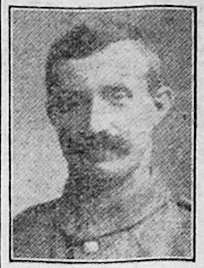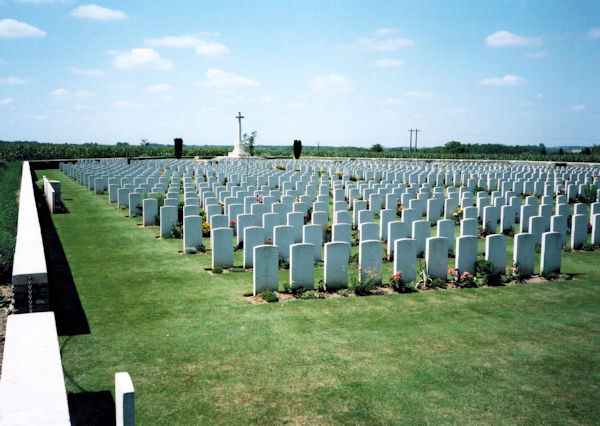Name
Alfred James Davis
28 February 1882
Conflict
First World War
Date of Death / Age
22/03/1918
36
Rank, Service Number & Service Details
Private
205100
Northamptonshire Regiment
6th Bn.
Awards: Service Medals/Honour Awards
British War and Victory medals
Cemetery/Memorial: Name/Reference/Country
GRAND-SERAUCOURT BRITISH CEMETERY
V.B.20
France
Headstone Inscription
None
UK & Other Memorials
St Mary the Virgin Roll of Honour, Welwyn,
St Michael & All Angels Church Memorial (paper sheet), Woolmer Green
Pre War
Alfred James Davis was born on 28 February 1882 in the Welwyn district (Inc. Woolmer Green & Tewin) the son of Daniel and Mary Davis and one of nine children. He was baptised in Welwyn on 26 March 1882.
The family were living in Woolmer Green in 1891, when his father was working as an agricultural labourer. They remained there in 1901 by which time Alfred was working as an agricultural labourer and his father was working as a railway platelayer.
Alfred married Esther Elizabeth Wilsher of Tewin in 1909 and on the 1911 Census he was living with his wife Esther and their child Elsie in Woolmer Green, where he was working as a carman to a gravel contractor.
Wartime Service
Alfred enlisted in Hitchin, Herts and joined the 6th Battalion, Northamptonshire Regiment. It is not known when he was sent to France.
He was killed in action on 22 March 1918, aged 36, during the Battle of St Quentin (part of the German Spring Offensive) and is buried at Grand Seraucourt, British Cemetery, France.
His body was recovered from map ref 66c M23 d.3.4 and identified by his name disc.
Additional Information
His widow received a war gratuity of £3 and pay owing of £3 3s 6d. She also received a pension of £1 0s 5d a week for herself and daughter Elsie.
N.B. The surname Davis is sometimes misspelt with Davies in some records.
Elder brother Edward enlisted in May 1915 and served with Beds Regt, Devonshires and Essex Regt in Middle East sustaining a shrapnel wound to his left eye but surviving the war.
Acknowledgments
Neil Cooper, Brenda Palmer
Brenda Palmer



